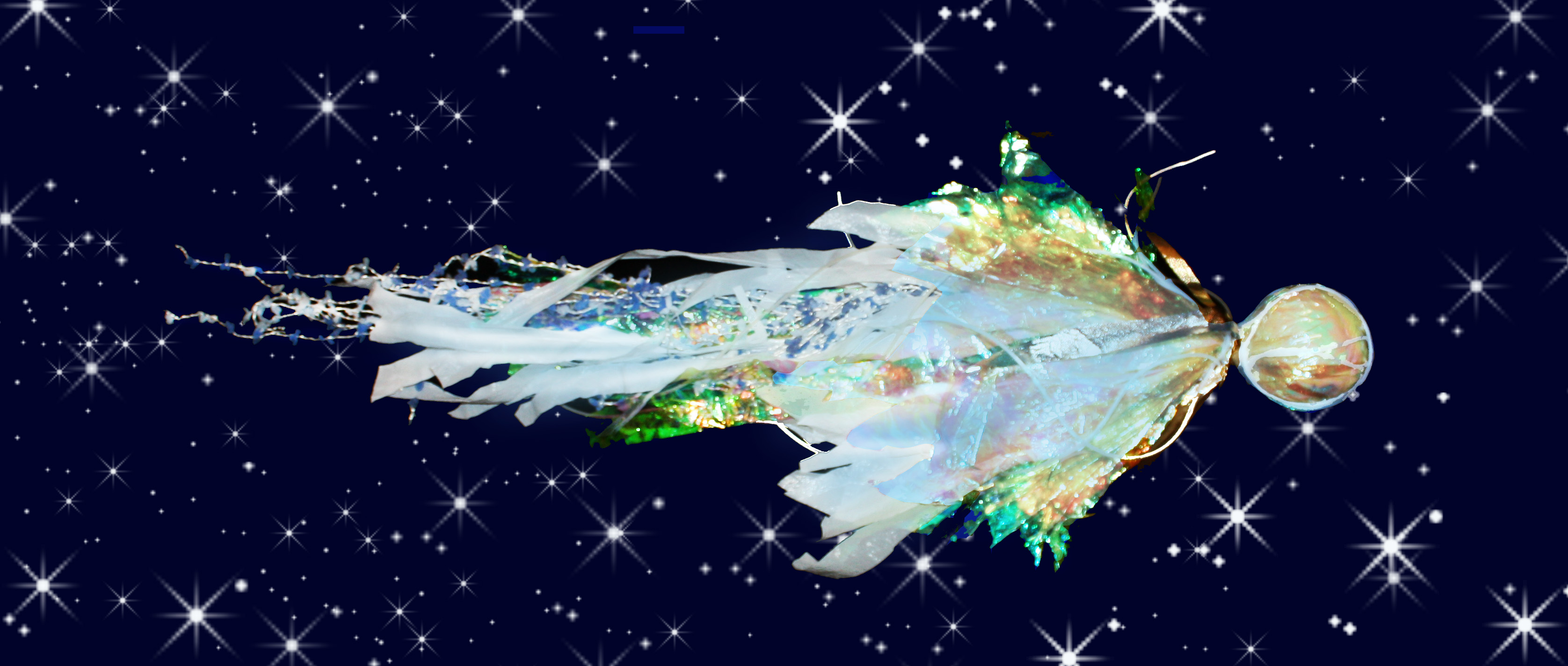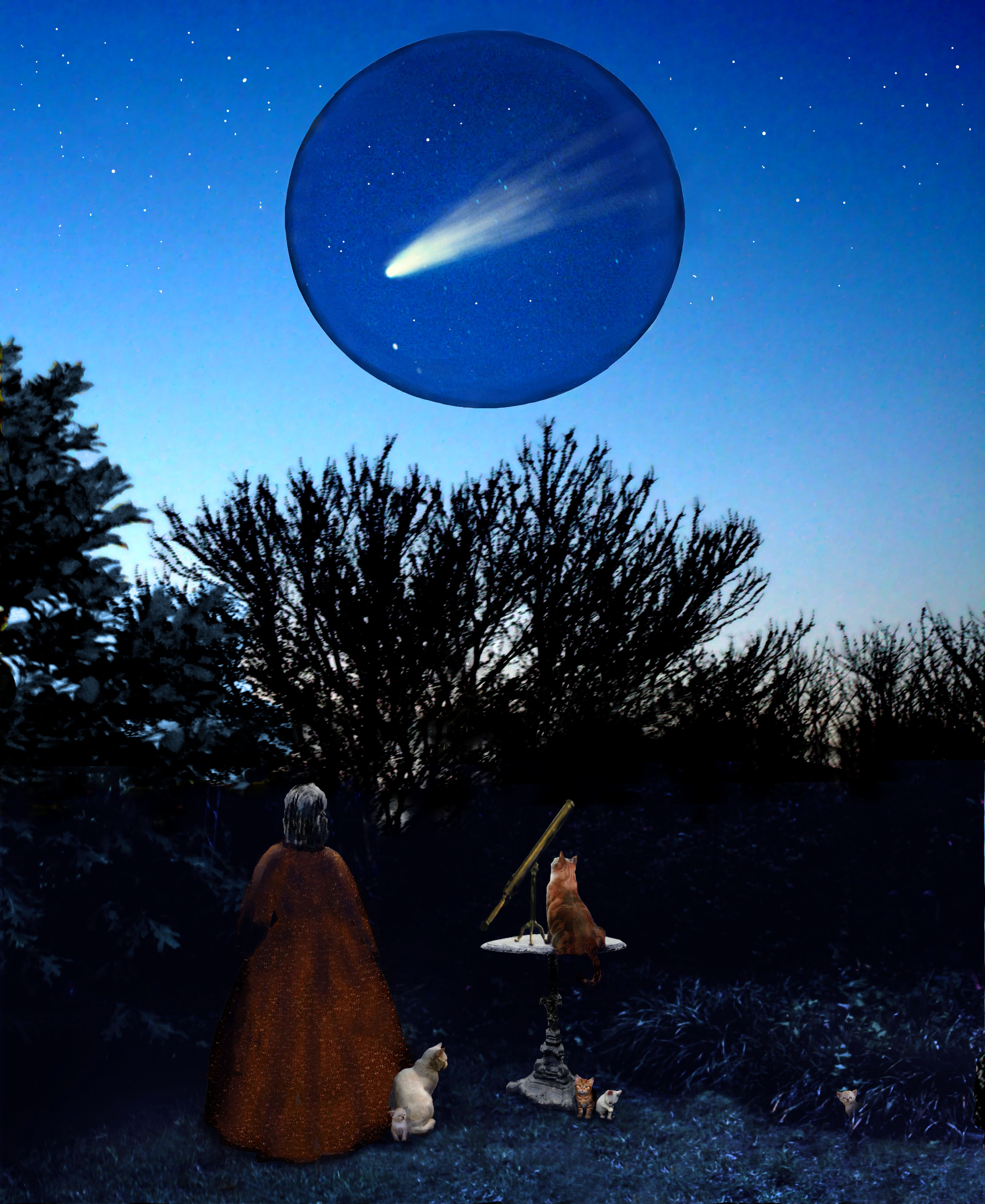By Kathleen Horner
- Published: Wednesday, June 18 2014 12:32
"Comets giveth, and comets taketh away."
Carl Sagan

Glow-in-the-Dark Flying Comet
It was 1997 when I first caught sight of the Hale-Bopp comet. This historic moment was my very first view of a comet. It was appropriately named "The Great Comet of 1997" due to its exceptional brightness and naked eye visibility. Appearing perpetually suspended in the night sky, its glowing coma and silvery white tail seemed to spread out over the eons of space and time to my unbelieving eyes. This ubiquitous beauty made an appearance everywhere around the globe in 1997-1998. It was the best show on Earth. The Hale-Bopp comet was named after Alan Hale and Thomas Bopp, amateur astronomers, who independently discovered it in 1995. The Hale-Bopp comet holds the record for the longest period of naked-eye visibility with a cosmic show that lasted an amazing 19 months! When is it coming back? Not for another 2400 years.

Hale-Bopp Comet Photo Courtesy of NASA
Often referred to as 'dirty snowballs' or as Carl Sagan described them, icebergs, comets are the remains of the formation of stars and planets billions of years ago. It is believed that comets originated from cosmic debris of small chunks of ice and rocks found within the Oort Cloud and Kuiper Belt. Interaction with the gravitational forces of the planets in the Oort Cloud combined with galactic tidal forces and stars further out from the Kuiper Belt pushed the comets out into their present day orbits. The observable comets in our Solar System are pulled in towards the Sun's gravity moving faster and faster with a tail that grows longer as it moves closer to the Sun.
Comets are not just there for a pretty night sky show, but used as a serious study by scientists in understanding how the early Solar System was formed. We know that comets are the leftovers of debris formed in the coldest region of our Solar System. We can also learn about the evolution of the Earth from billions of years ago from the study of comet impact. There are theories that discuss the possibility of comets carrying organic molecules and water to Earth. There are so many fascinating things that comets can teach us in better understanding how life originated on Earth and how the formation of the Solar System came to be. To learn more in depth about the study of comets and their contributions to science, click on the resource links below.
Resources
Diagram of the Oort Cloud and Kuiper Belt:
http://solarsystem.nasa.gov/planets/profile.cfm?Object=KBOs&Display=OverviewLong
A history of famous comets:
http://www.listosaur.com/science-a-technology/10-famous-comets-in-history/
AstroCrafts Astronomers Without Borders Archive (2013-2014 AstroCrafts Projects):
http://astronomerswithoutborders.org/blog/astroart-blog/category/astrocrafts.html
How to Make a Flying Glow-in-the-Dark Comet
(See sample comet in Photo A above)
Let's get started on making a glow-in-the-dark flying comet. It's so easy to create that the whole family can get involved regardless of age. This is also a superb project for teaching about comets in the classroom or for a youth astronomy summer camp activity. You can get seriously creative like I did and create a very long and ultra sparkly comet or stick to making a simply quick and beautiful comet from the directions below. Streamers can be made from yarn, ribbon, strips of fabric, strings, etc.
You can find the glow-in-the-dark Pony Bead Lacing in most crafts stores. I found mine made by Pepperell Crafts at Hobby Lobby. You can also order online if you can't find it locally. If you cannot find the pony bead lacing, you can use glow-in-the-dark paint to cover the comet head and create your own comet streamers using multiple colors for special effects.
Tennis balls are sold everywhere, are inexpensive and are the best as far as aerodynamic tossing in the air. This project costs next to nothing and it's amazing what you can find around the house for craft projects.
This craft idea was originally published in Family Fun Magazine.
What you'll need
• Tennis ball
• Plastic shopping bag, transparent sparkles wrapping paper (optional)
• Scissors
• Clear tape
• Glow-in-the-dark plastic pony bead lacing or Glow-in-the-dark paint
• Ribbons, fabric strips, strings, yarn
How to make it
1. Lay a plastic shopping bag flat, then trim off the handles and slit up the sides. Place a tennis ball in the middle of the bottom of the bag. Gather the plastic around the ball; secure the gathered neck with clear tape. Over this you can place transparent wrapping paper as another layer over the ball. Cut the loose part of the bag and wrapping paper into 1-inch-wide strips and trim them at the ends, if desired.
2. Lay one end of a 7-foot length of glow-in-the-dark plastic lacing along the length of the strips and wrap the lacing around the neck a couple of times. Wrap the remaining lacing around the ball three times in one direction, turn the ball 90 degrees, then wrap it three more times so that the lacing crosses itself. Tie the lacing around the neck to secure it and trim the excess to the length of the strips.
3. Run a strip of clear tape around the ball perpendicular to the wrapped lacing to keep it from sliding. Tie a few thin ribbons or yarn and more strands of lacing around the neck of the ball.
Now go outside at night and have some fun with your newly created comet! They really do glow in the dark, no kidding. Cats and dogs get a charge out of these magical flying comets in the dark so invite them out to play along with you. When not in use, hang it up on a door, window or from the ceiling in the bedroom as an artsy glow-in-the-dark display.
Stay tuned for another AstroCrafts project coming up later this summer on the Astronomers Without Borders website. If you want more astronomy-related craft projects for some summer artsy fun, check out the past AstroCrafts projects at this link: http://astronomerswithoutborders.org/blog/astroart-blog/category/astrocrafts.html

American Astronomer, Maria Mitchell, discovers a comet in 1847. "Miss Mitchell's Comet" was first observed from her garden in Nantucket, Massachusetts. Here in this artist imagined illustration she is surrounded by her little family of cats as they gaze toward a region of the sky where the comet was found. Illustration from, "The Tales of Astro Cat", copyright 2012.








Comments